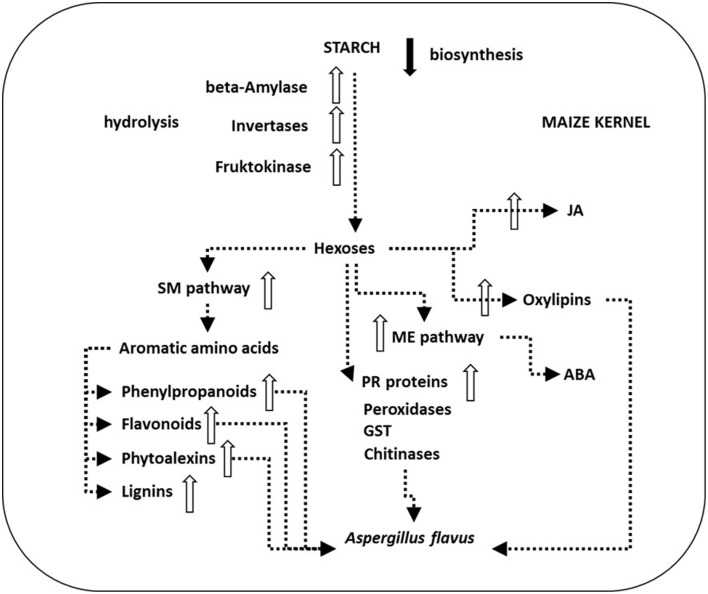Figure 10.
Schematic presentation of main plant defense processes in Aspergillus flavus-maize interactions. A. flavus can attack kernels during all the six stages of their development. However, infection in non-injured kernels takes place later in the field, during the dent (R5) developmental stage just prior to physiological maturity (R6) (Marsh and Payne, 1984). As soon as 4 days after inoculation A. flavus mycelium reaches the aleurone, endosperm and germ tissue (Dolezal et al., 2013). Transcriptional analysis of the maize—A. flavus pathogen interaction revealed down-regulated (black arrow) starch biosynthesis and up-regulated genes (white arrows) of plant starch hydrolytic enzymes like β-amylase as well as downstream invertases and fructokinase. The produced hexoses flow through the up-regulated shikimate (SM) pathway, the methylerithryole (ME) pathway and toward up-regulated jasmonic acid (JA) and oxylipin biosynthesis, and feed pathogenesis related (PR) protein synthesis, e.g., peroxidases, glutathione S-transferase (GST) or chitinases that were also found up-regulated during infection. Oxylipins up-regulate aflatoxin (AF) biosynthesis and sexual reproduction in A. flavus and down-regulate fungal growth. Up-regulation of the SM pathway leads to the production of antifungal compounds flavonoids, phenylpropanoids, phytoalexins, and up-regulated lignin production in maize. Up-regulated plant hormone JA and abscisic acid (ABA) production is crucial in these defense mechanisms (Dolezal et al., 2014).

